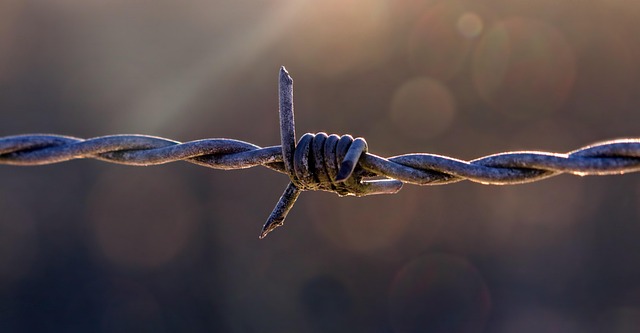In coastal areas, fencing faces unique challenges from relentless wind, salt mist, and varying moisture levels. Choosing the right durable wooden fence can significantly enhance outdoor spaces while withstanding these harsh conditions. This article explores the benefits of high-quality wooden fencing materials, guides you through selecting suitable wood species for saltwater resistance, offers installation techniques to ensure longevity in challenging environments, and provides essential maintenance tips to maximize the lifespan of your coastal fence.
- Understanding Coastal Area Challenges for Fencing
- Benefits of Durable Wooden Fencing Materials
- Choosing the Right Wood Species for Saltwater Resistance
- Installation Techniques for Longevity in Harsh Environments
- Maintenance Tips to Prolong Fence Lifespan
Understanding Coastal Area Challenges for Fencing
Coastal areas present unique challenges when it comes to installing and maintaining fencing due to their harsh environmental conditions. The constant exposure to salt water, strong winds, and varying temperatures can significantly impact materials over time. Traditional fencing options may not hold up against these elements, leading to frequent replacements and increased costs.
Durable wooden fencing specifically designed for coastal regions is a practical solution. These fences are constructed using treated wood that has been enhanced to resist rot, decay, and insect damage, ensuring longevity even in challenging climates. The right types of wood, such as cedar or pressure-treated options, offer excellent resistance to salt water, making them ideal for protecting properties along the coast.
Benefits of Durable Wooden Fencing Materials
Durable wooden fencing offers an appealing and natural aesthetic for coastal areas, seamlessly blending with the surrounding environment. One of its key advantages is its ability to withstand harsh weather conditions, including strong winds, salt mist, and frequent rainfall. Treated and sealed wood can significantly outlast traditional fence materials, making it a cost-effective and long-lasting option.
These fences provide excellent privacy and security while contributing to the overall beauty of the coastline. The natural material allows for creative designs and custom installations, catering to various landscape styles. Additionally, durable wooden fencing can be easily maintained and repaired, ensuring its longevity and adaptability to changing coastal conditions.
Choosing the Right Wood Species for Saltwater Resistance
When selecting wood for coastal fencing, understanding its resistance to saltwater is paramount. Not all woods are created equal in this regard, and choosing the right species can significantly impact the longevity of your fence. Certain tree varieties possess natural oils and dense grains that act as a protective barrier against the corrosive effects of salt water.
Hardwoods like cedar, redwood, and teak are renowned for their durability in coastal environments. These woods have high oil content, which repels moisture and discourages fungal growth. Additionally, their dense structure prevents water from seeping into the wood, reducing the risk of rot and decay. Softwoods, while less durable in saltwater settings, can be treated with preservatives to enhance their resistance for use in fencing applications.
Installation Techniques for Longevity in Harsh Environments
When installing wooden fencing in coastal areas, special attention must be paid to techniques that ensure longevity despite harsh environmental conditions. One key practice is proper preparation of the fence posts, which should be deeply rooted and anchored using concrete to withstand strong winds and regular exposure to salt water. This foundational strength is crucial for preventing post rot and maintaining structural integrity over time.
Regular maintenance, such as re-painting or sealing the wood, plays a significant role in protecting the fencing from decay caused by moisture and salt. Using durable wood species like cedar or treated timber further enhances resistance to coastal elements. Additionally, installing a protective coat or barrier on the fence’s surface can offer extra shield against harsh weather, ensuring the longevity of the wooden fencing.
Maintenance Tips to Prolong Fence Lifespan
Regular cleaning and inspection are key to maintaining your wooden fence in coastal areas. Salt air and moisture can accelerate wood decay, so it’s essential to wipe down the fence regularly with a damp cloth or sponge to remove any salt buildup. A light pressure wash can also help remove stubborn stains and loose debris, but be sure to use a low-pressure setting to avoid damaging the wood.
In addition to cleaning, applying a fresh coat of waterproof sealant every 1-2 years will significantly extend the lifespan of your fence. Check for any signs of rot, peeling paint, or damaged boards and repair them promptly. Regular maintenance, combined with high-quality materials, will ensure your coastal wooden fence remains sturdy and attractive for many years to come.
